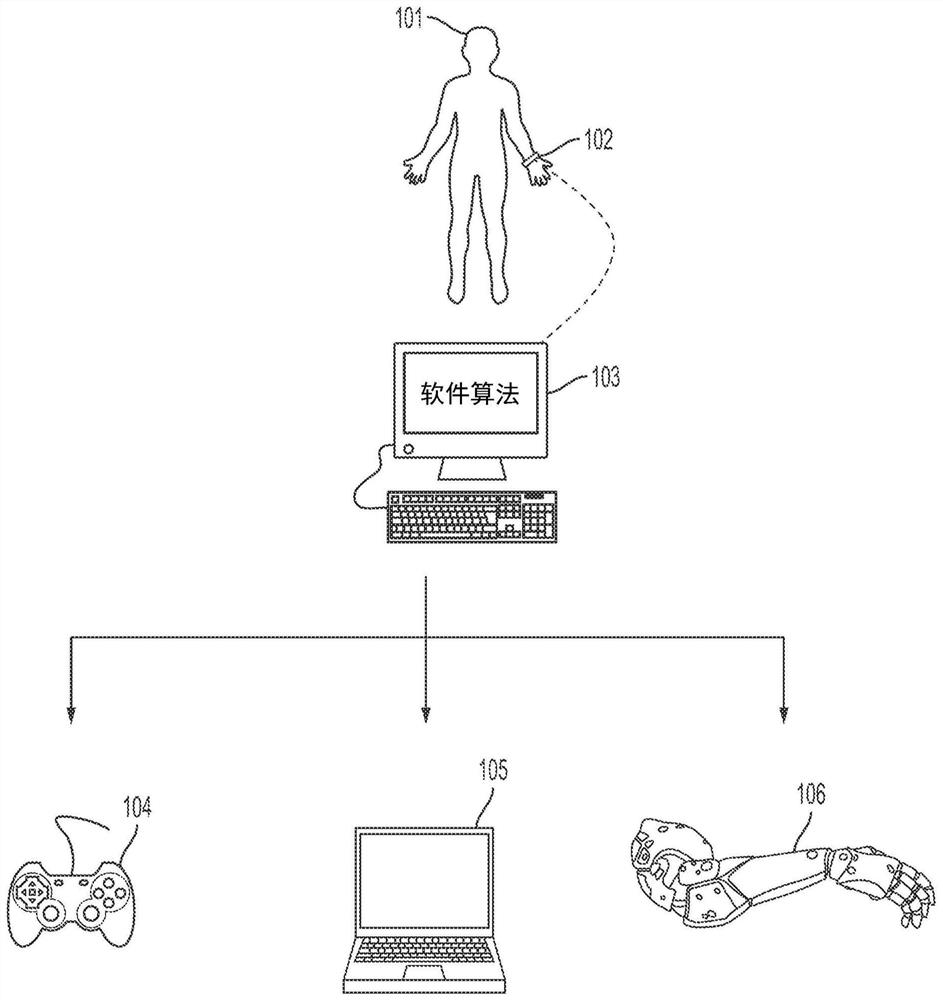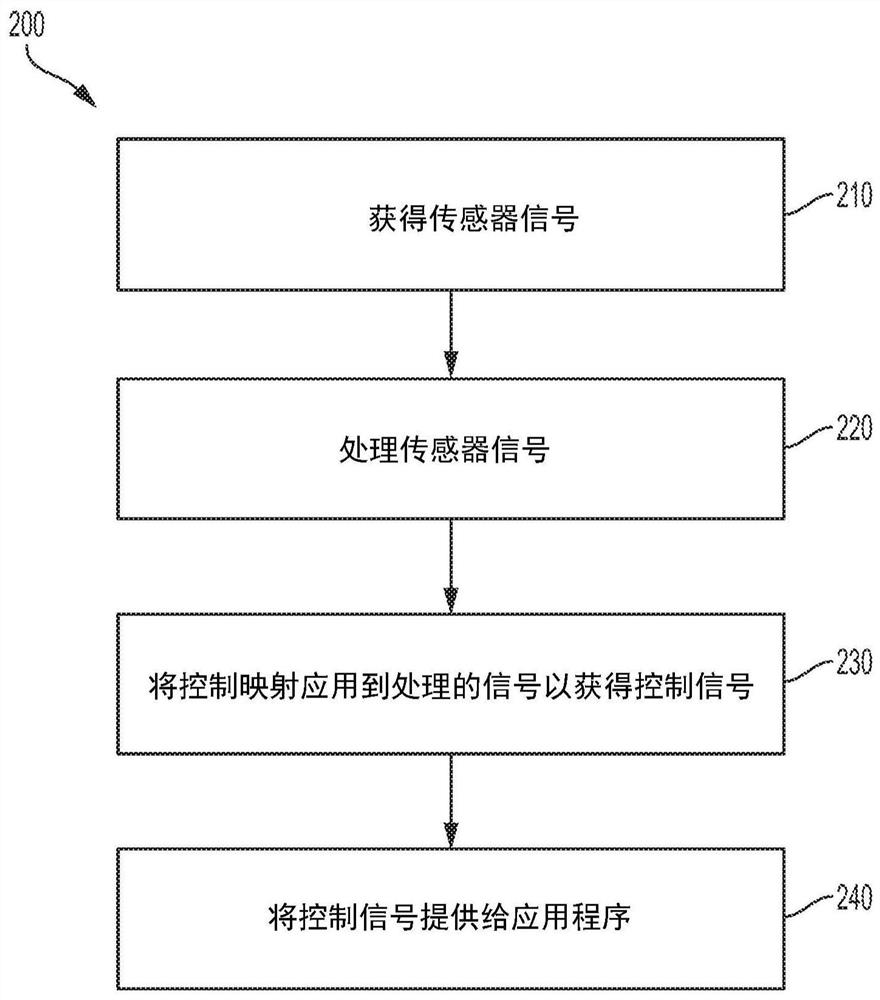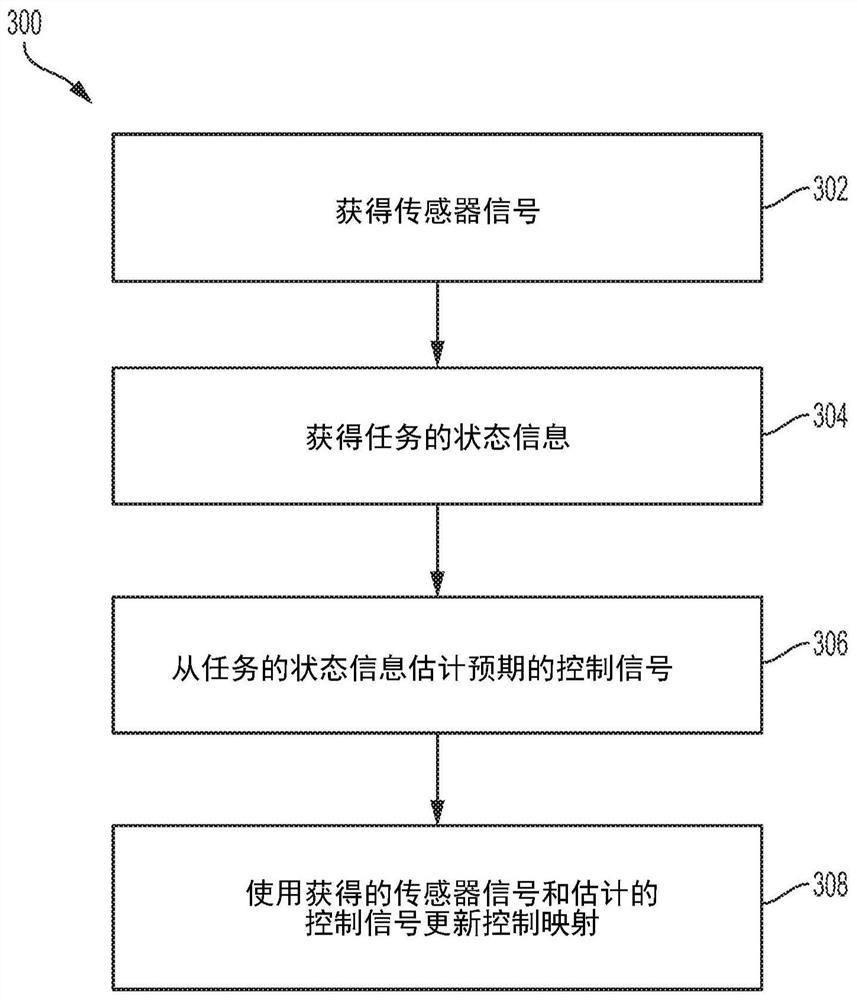Adaptive systems for deriving control signals from neuromuscular activity measurements
A technique of neuromuscular, control signaling applied to a muscle or field to achieve low cost, less invasive treatment, less equivalent control
- Summary
- Abstract
- Description
- Claims
- Application Information
AI Technical Summary
Problems solved by technology
Method used
Image
Examples
Embodiment Construction
[0023] Some traditional BCIs record brain (eg, cortex) signals and map the recorded brain signals to corresponding control signals to control prosthetics and make the prosthetic device perform movements. While such brain-computer interface technologies are useful for enabling patients to self-control prosthetic devices using the patient's own brain signals, implementing them is very invasive because they require direct access to cortical neurons in the brain to record for providing control Signal biosignature. The inventors have recognized and appreciated that biophysical signals corresponding to the user's motion can be measured by using multiple sensors worn by the user (e.g., EMG sensors), and mapping the motion information recorded by the sensors to control devices for controlling signals to improve traditional control interfaces.
[0024] figure 1 Components of a system are shown that map signals recorded from sensors 102 worn by a user 101 to control signals that are t...
PUM
 Login to View More
Login to View More Abstract
Description
Claims
Application Information
 Login to View More
Login to View More - R&D
- Intellectual Property
- Life Sciences
- Materials
- Tech Scout
- Unparalleled Data Quality
- Higher Quality Content
- 60% Fewer Hallucinations
Browse by: Latest US Patents, China's latest patents, Technical Efficacy Thesaurus, Application Domain, Technology Topic, Popular Technical Reports.
© 2025 PatSnap. All rights reserved.Legal|Privacy policy|Modern Slavery Act Transparency Statement|Sitemap|About US| Contact US: help@patsnap.com



